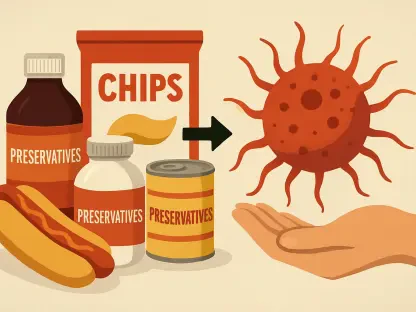With a wealth of experience in biopharma and a keen eye for technological advancement, Ivan Kairatov stands at the forefront of innovation in the industry. Today, he shares his insights on the FDA’s recent decision to publish complete response letters (CRLs), a move designed to enhance transparency and reliability in drug approval processes.
Can you explain the purpose behind the FDA’s decision to publish complete response letters (CRLs)?
The FDA’s decision is primarily driven by the goal of increasing transparency in the drug approval process. By making these letters public, the FDA aims to provide clearer insights into why certain applications are not approved. This transparency helps stakeholders understand the rationale behind decisions, reducing the scope for misinterpretation or misinformation.
What specific types of information do CRLs generally contain about the applications they address?
CRLs typically detail the deficiencies within a drug or biological product’s application. These might include concerns about the product’s safety and efficacy, manufacturing issues, or failure to meet bioequivalence standards. By outlining these areas, the CRLs serve as a guideline for sponsors on what needs to be addressed before approval can be considered.
Why has the FDA not published CRLs for pending applications in the past?
Historically, CRLs were kept from the public domain to protect proprietary information and to avoid impacting market behavior based on incomplete data. Additionally, publishing them before final decisions could lead to misinterpretations about an application’s ultimate approval status.
How can the publication of CRLs help improve transparency within the pharmaceutical industry?
Publishing CRLs opens up the FDA’s decision-making process, providing stakeholders, including other sponsors, with valuable lessons on common pitfalls in submissions. This allows companies to learn from each other’s mistakes and improves the overall quality of submissions, helping to align the industry with regulatory standards more consistently.
What were some findings from the FDA’s 2015 analysis regarding sponsors’ disclosure practices?
The 2015 analysis revealed that sponsors often downplayed or omitted critical safety and efficacy concerns when discussing non-approvals. Around 85% of these concerns were not mentioned in public communications, and there was a significant lack of transparency when new clinical trials were requested by the FDA, with pertinent information withheld nearly 40% of the time.
What is the significance of sponsors not mentioning safety and efficacy concerns in their public communications?
By not fully disclosing safety and efficacy issues, sponsors may mislead investors and the public, potentially creating a false sense of progress or stability within their pipelines. This lack of transparency can erode trust and delay necessary corrective actions, ultimately impacting patient safety and market integrity.
How might the public access these published CRLs? Is there a specific platform or database?
The FDA has made these documents accessible through a publicly available platform. While the specifics about the platform were not detailed, it can be assumed that it will be integrated within existing FDA digital resources, ensuring easy access for stakeholders interested in this information.
Could you give us an example of a deficiency that might be listed within a CRL?
One common deficiency might be related to incomplete or inadequate clinical trial data. For instance, if a trial was not conducted with a diverse enough demographic, leading to questions about the product’s efficacy across different populations, the FDA would require additional data to address this concern.
In what ways do CRLs help drug developers in their application processes?
By learning what has led to non-approvals in the past, drug developers can better tailor their applications to meet FDA standards. CRLs serve as practical learning tools, offering insights into common errors and areas for improvement, thus streamlining the path to approval.
How does the publication of CRLs align with the FDA’s broader transparency initiatives?
This initiative ties into the FDA’s commitment to an open and communicative regulatory environment. It complements efforts like reduced review times for drug applications and the integration of artificial intelligence systems, which all aim to make the drug approval process more efficient and predictable for stakeholders.
What impact might this have on capital markets and investors in the pharmaceutical industry?
Increased transparency from CRLs can lead to more informed investment decisions, as investors gain insights into the potential hurdles a drug might face before approval. This can stabilize markets by minimizing speculative investments based on incomplete or inaccurate information.
How does this initiative fit into the FDA’s recent efforts to reduce review times for certain drug applications?
By highlighting common deficiencies earlier in the process, CRLs can help applicants address issues promptly, potentially speeding up subsequent reviews. This aligns well with the FDA’s initiative to significantly reduce review times, effectively bringing treatments to market more quickly when they meet required standards.
Can you tell us more about the FDA’s plan to implement a generative artificial intelligence system across all its centers?
The integration of AI systems across the FDA centers aims to streamline data processing and improve decision-making efficiency. This technological advancement is expected to reduce bureaucratic bottlenecks and enhance consistency across the board, benefiting the speed and quality of regulatory reviews.
How does Marty Makary envision these transparency initiatives benefiting patients in the long term?
By making regulatory processes more transparent, patients can benefit from faster access to effective treatments. The initiatives are designed to ensure that only safe and efficacious products reach the market, ultimately improving patient outcomes and trust in healthcare systems.
Do you foresee any challenges or drawbacks to the publication of CRLs? If so, what are they?
One potential challenge is the risk of proprietary information being exposed, which could affect competitive advantage. Additionally, there might be unintended market reactions to the publication of negative findings, which could lead to instability. Careful management and redaction of sensitive data are essential to mitigate these risks.









